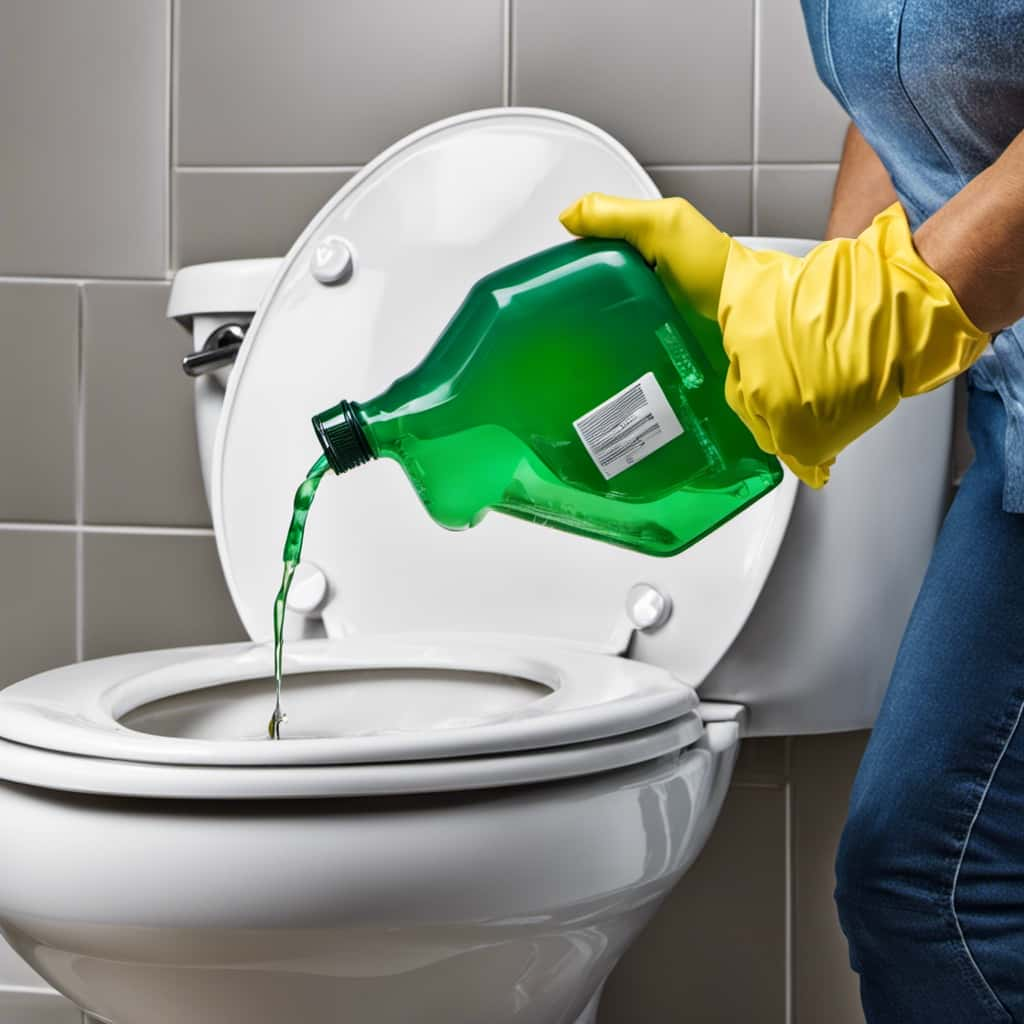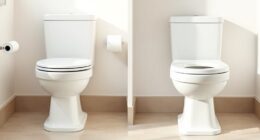Hello! Ever found yourself dealing with a malfunctioning toilet flush? Worry no more, because we have the solution for you.
In this article, we’ll show you exactly what to do if your toilet flush decides to call it quits. From checking for water supply issues to replacing faulty flappers, we’ll guide you through the process step by step.
So, sit tight, grab your tools, and get ready to become a toilet flush troubleshooting expert!
Key Takeaways
- Check the water pressure in the toilet tank and ensure the water valve is fully open for sufficient water flow.
- Inspect the water valve and float mechanism for any damage or malfunction and replace them if necessary.
- Adjust the water level in the tank using the adjustment screw on the fill valve to prevent overflow.
- Clean or replace the flapper valve and address any issues with the flush handle and chain alignment to fix a broken flush.
Check for Water Supply Issues
First, we need to determine if there are any water supply issues by checking the water valve.

To do this, start by examining the water pressure in your toilet tank. Low water pressure may indicate a problem with the water supply.
Ensure that the water valve is fully open to allow sufficient water flow.
Next, check for any leaks or blockages that may be affecting the water supply to the toilet. Leaks can disrupt the water pressure, causing a weak flush.
Additionally, inspect the water valve for any signs of damage or malfunction. If the valve is faulty, it may need to be replaced to restore proper water flow.

Once you have checked for water supply issues, it’s time to inspect the flush handle and chain to identify any mechanical problems.
Inspect the Flush Handle and Chain
Now let’s turn our attention to the flush handle and chain.
When the handle is misaligned, it can prevent the toilet from flushing properly. We’ll provide troubleshooting tips for realigning the handle and ensuring it functions smoothly.
Additionally, we’ll discuss how to adjust the length of the chain to ensure it has the right amount of slack for proper flushing.

Handle Misalignment Troubleshooting
To begin troubleshooting handle misalignment, we need to inspect the flush handle and chain.
The first step is to check if the handle is properly attached to the toilet tank. If it’s loose, tighten the mounting nut using a wrench.
Next, examine the chain connected to the handle. Ensure that it’s properly attached and not tangled or twisted. If the chain is too loose, adjust its length by moving the chain hook to a different link. On the other hand, if the chain is too tight, you may need to replace it with a longer one.
Lastly, test the flush handle to see if it aligns properly with the flush valve. If not, adjust the handle position by loosening the mounting nut and repositioning it accordingly.
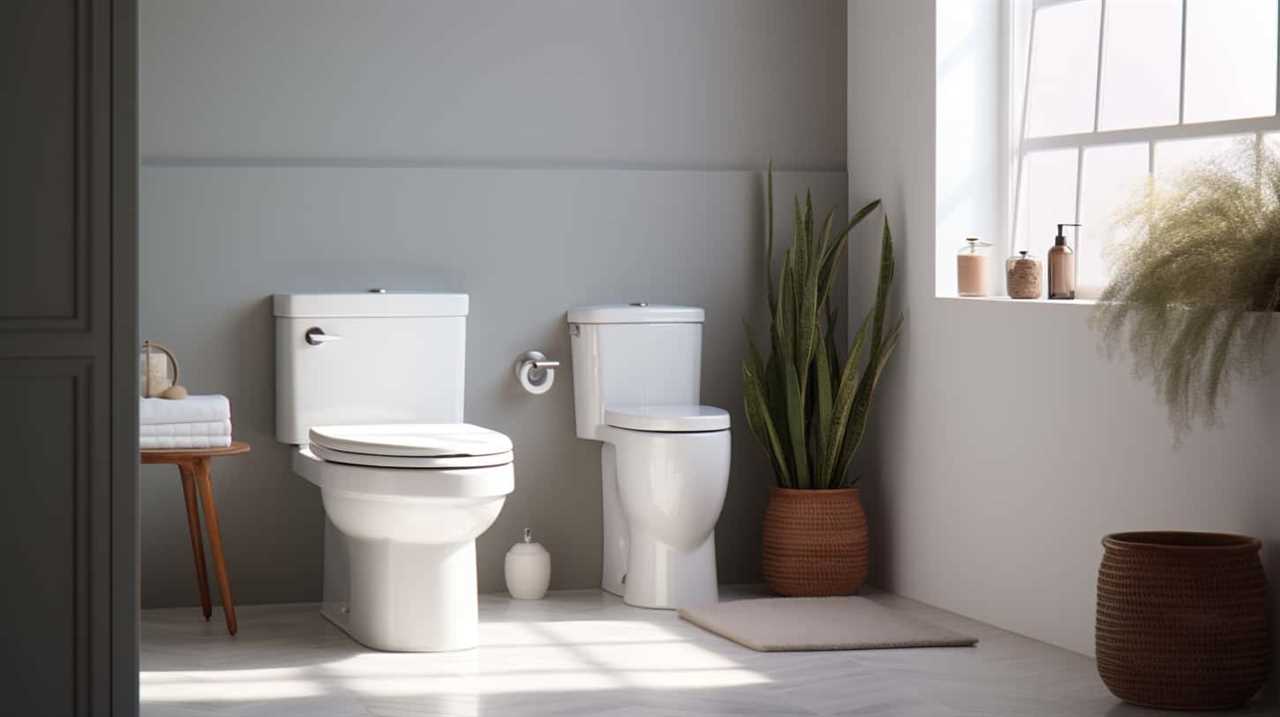
Chain Length Adjustment Tips
We can adjust the length of the chain connected to the flush handle by following these tips:
- Inspect the flush handle and chain:
- Check for any misalignment or damage to the flush handle.
- Ensure that the chain is properly connected to the flush handle and the flapper valve.
Troubleshooting the chain length adjustment:
- If the chain is too short, it may prevent the flapper valve from fully closing, leading to continuous water flow.
- If the chain is too long, it may get tangled or caught, causing the flush handle to become unresponsive.
By adjusting the chain length, we can ensure proper functioning of the toilet flush. If troubleshooting and adjustment don’t resolve the issue, it may be necessary to consider chain replacement.
Now, let’s move on to the next section to learn how to adjust the water level in the tank.
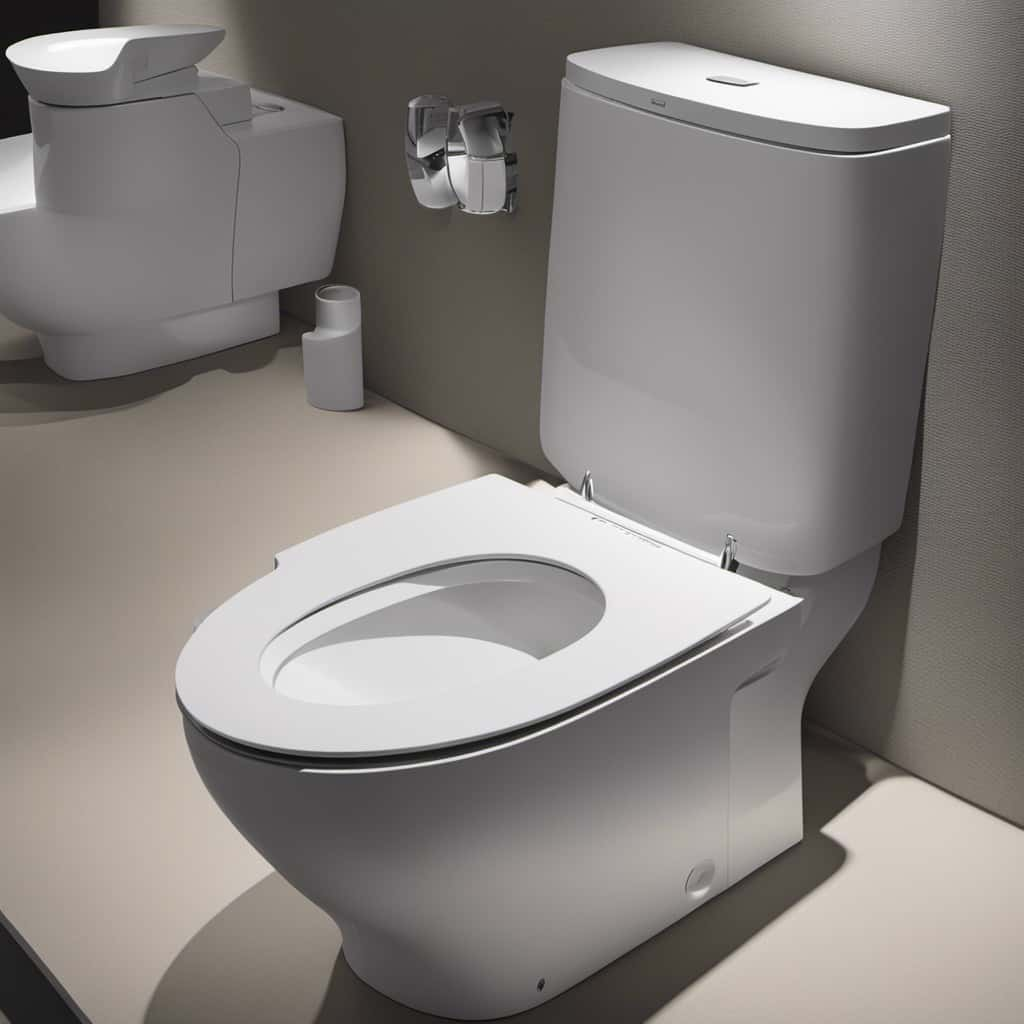
Adjust the Water Level in the Tank
Let’s now discuss how to adjust the water level in the tank.
Fixing the water level is crucial for proper toilet functionality.
We’ll explore different methods to adjust the tank water and provide solutions to address a broken flush.
Fixing Water Level
To fix the water level in the tank, start by checking the float mechanism. This mechanism is responsible for controlling the water level in the tank. If the water level is too high or too low, it could be an issue with the float.
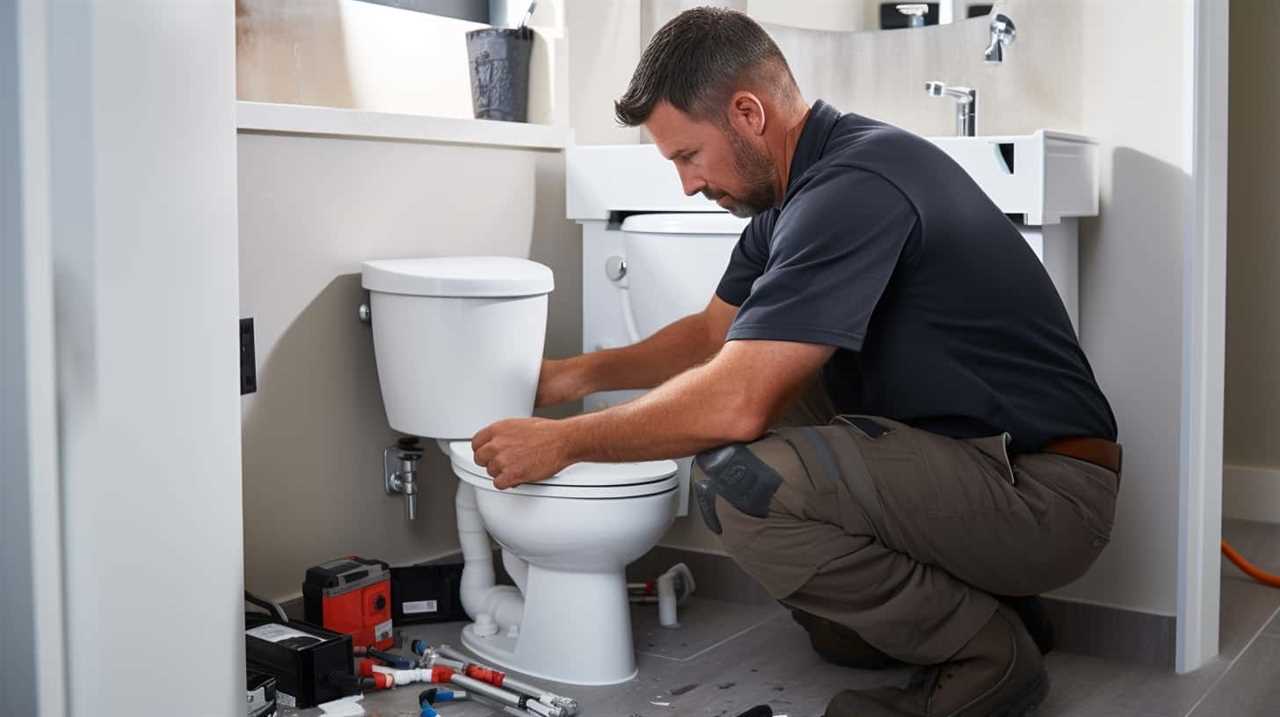
Here are some troubleshooting steps to help you adjust the float and prevent overflow:
- Ensure that the float arm is properly attached to the fill valve.
- Check if the float arm is bent or damaged. If so, it may need to be replaced.
- Adjust the float by bending the float arm slightly downwards to lower the water level or upwards to raise it.
By following these steps, you can fix the water level in the tank and prevent any overflowing issues.
Now, let’s move on to the next section where we’ll discuss how to adjust the water level in the tank.
Tank Water Adjustment
To adjust the water level in the tank, we can make further adjustments to the float mechanism.

The tank water pressure plays a crucial role in the proper functioning of the toilet flush mechanism.
If the water level in the tank is too high, it can cause water to continuously flow into the toilet bowl, resulting in wasted water and potential damage to the toilet.
On the other hand, if the water level is too low, the toilet may not flush properly, leading to incomplete waste removal.
To adjust the water level, locate the float mechanism, which is usually a ball or cup attached to an arm.

Broken Flush Solutions
To continue addressing the issue of a broken flush, we can now focus on how to adjust the water level in the tank, ensuring an efficient toilet flush mechanism. When the flush is broken, it’s important to understand the causes behind it. Common causes include a faulty fill valve, a defective flapper valve, or a clogged water inlet.
To temporarily fix a broken flush, here are two solutions you can try:
- Adjust the water level in the tank by turning the adjustment screw on the fill valve. This will ensure that the tank has enough water for a proper flush.
- Check and clean the flapper valve. If it’s damaged or worn out, replace it with a new one.
Clean the Toilet Bowl and Flapper
To properly clean the toilet bowl and flapper, we’ll need to start by removing any debris and buildup from the surfaces.
Begin by turning off the water supply to the toilet and flushing it to drain the tank.
Next, use a toilet brush and a mild cleaner to scrub the bowl, paying special attention to the waterline and under the rim.
Rinse the bowl thoroughly with water and dry it with a clean cloth.
Moving on to the flapper, inspect it for any signs of wear or damage.
If necessary, replace the flapper using the appropriate flapper replacement kit.
Cleaning the toilet bowl and flapper regularly will help maintain optimal flushing performance and prevent future issues.

Now, let’s move on to the next step: replacing a faulty flapper.
Replace a Faulty Flapper
After cleaning the toilet bowl and flapper, we can now proceed to replace the faulty flapper.
To replace a faulty flapper, follow these steps:
- Turn off the water supply: Locate the water shut-off valve behind the toilet and turn it clockwise to stop the water flow.
- Remove the flapper: Disconnect the flapper chain from the flush handle and remove the flapper from the overflow tube.
- Purchase a replacement flapper: Take note of the flapper’s size and shape, and purchase a suitable replacement from a hardware store.
- Install the new flapper: Attach the new flapper to the overflow tube and reconnect the chain to the flush handle.
- Test the flapper: Turn on the water supply and flush the toilet to ensure the flapper seals properly and the flush handle operates smoothly.
Now that the faulty flapper has been replaced, we can move on to the next step: unclogging any blockages in the toilet.
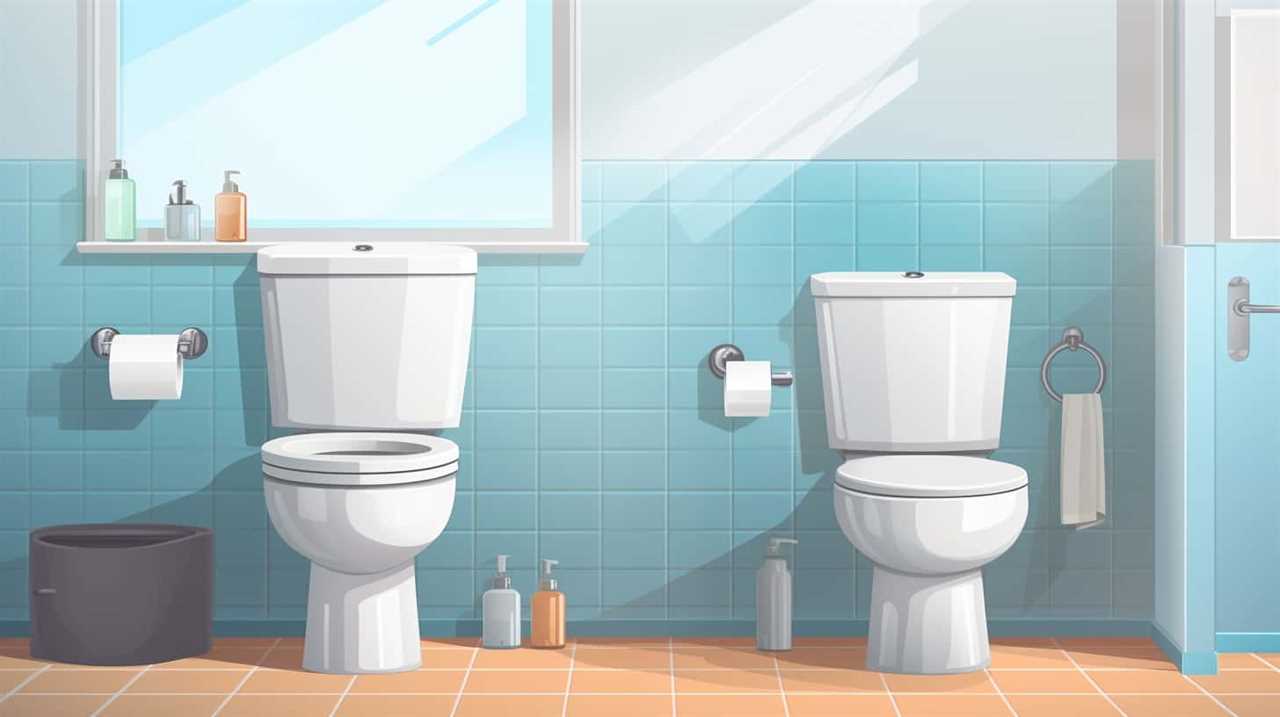
Unclog Any Blockages in the Toilet
First, assess the severity of the blockage in your toilet. If it’s a minor clog, using a plunger might be enough to clear it. Make sure to use a plunger specifically designed for toilets, as it has a flange that creates a better seal.
If the clog persists or seems more severe, you may need to employ the use of a toilet auger, also known as a snake, to reach and remove the blockage.
Consider your comfort level with DIY solutions, or if necessary, contact a professional plumber for assistance.
Plunger or Snake
We recommend using a plunger or snake to unclog any blockages in the toilet. These tools are highly effective in resolving toilet blockages and should be the first step in troubleshooting the issue.
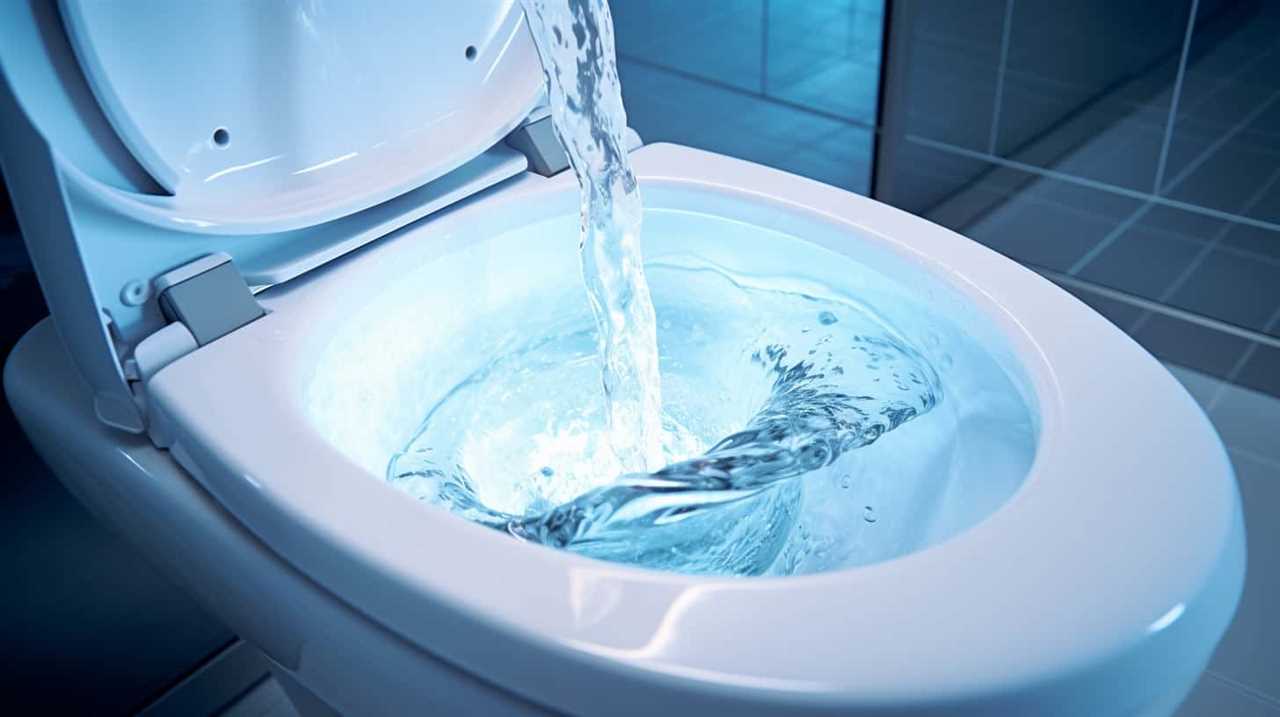
Here are some key points to consider:
- Plunger effectiveness:
- Ensure a proper seal: Before plunging, make sure the plunger creates a tight seal around the drain hole.
- Use firm, forceful strokes: Push down and pull up vigorously to create suction and dislodge the blockage.
- Repeat if necessary: If the blockage persists, repeat the plunging process several times.
- Snake usage:
- Choose the right snake: Use a toilet auger or snake specifically designed for toilets to avoid damaging the porcelain.
- Insert and rotate: Insert the snake into the drain hole and rotate it clockwise to break up the blockage.
- Retrieve the blockage: Once the snake has caught the blockage, carefully pull it out.
DIY or Professional?
Our recommendation for unclogging any blockages in the toilet is to assess whether the issue can be resolved through a DIY approach or if it requires the assistance of a professional. Before deciding, it is important to consider your level of expertise, the severity of the blockage, and the tools or equipment needed for the job. To help you make an informed decision, we have created a table outlining the pros and cons of both DIY and professional approaches:
| DIY Tips | Hiring Professionals |
|---|---|
| Cost-effective | Expertise and experience |
| Requires basic tools and techniques | Access to specialized equipment |
| Can be time-consuming | Prompt resolution of the issue |
| Limited to minor blockages | Ability to handle complex or severe blockages |
Based on this comparison, if you are confident in your skills and the blockage is minor, attempting a DIY approach can save you money. However, for complex or severe blockages, it is advisable to hire a professional who has the expertise and specialized equipment to resolve the issue promptly. Remember to prioritize your safety and the proper functioning of your toilet when making this decision.
Use a Plunger to Fix a Weak Flush
To fix a weak flush in a broken toilet, let’s try plunging it. Using a plunger can often solve the problem without the need for professional assistance. Here are some troubleshooting tips and techniques to help you get started:
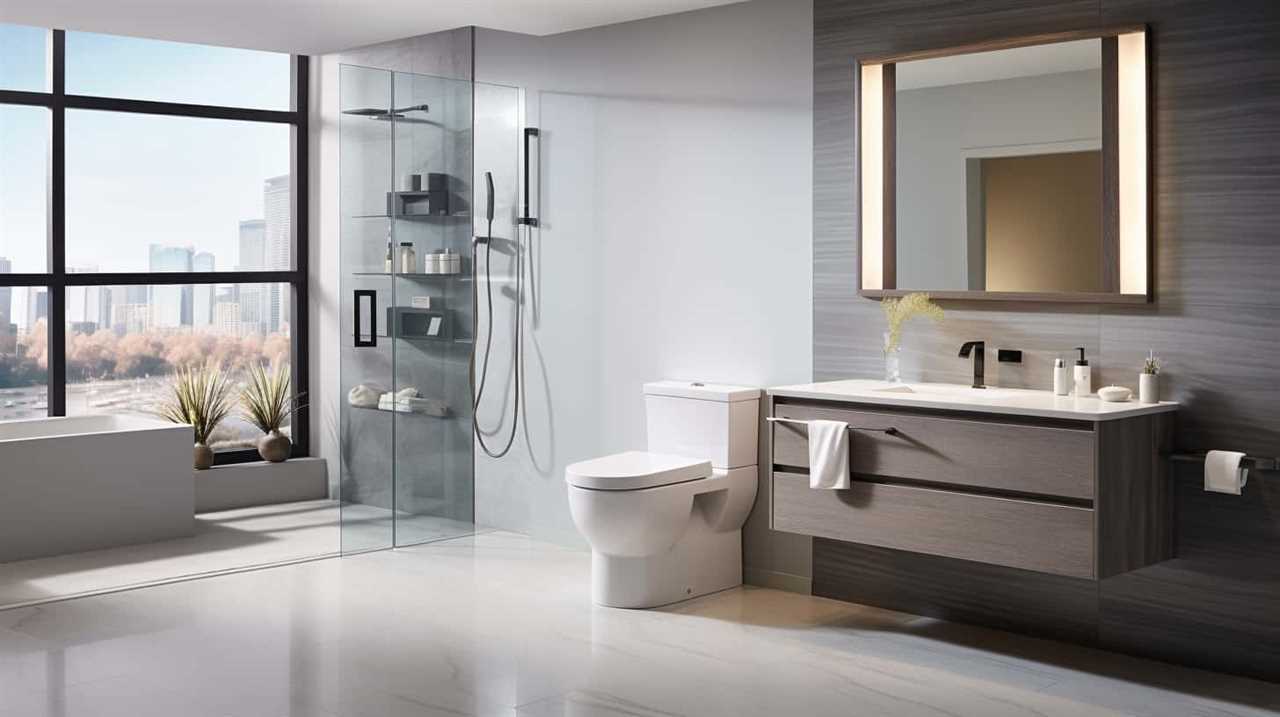
- Ensure the plunger is the right size and shape for your toilet. Look for a flange or bell-shaped plunger, as these are specifically designed for toilets.
- Make sure there’s enough water in the bowl to create a good seal. If not, add some water until it covers the rubber part of the plunger.
- Position the plunger over the drain hole and push down firmly, creating a tight seal.
- Begin plunging vigorously, using an up-and-down motion. The suction created should dislodge any blockages and improve the flush.
Try Using a Toilet Auger for Stubborn Clogs
To unclog stubborn toilets, we recommend using a toilet auger. When a plunger fails to resolve the issue, a toilet auger can be an effective alternative. This tool, also known as a plumbing snake, is designed to break up and remove clogs that are deeper in the toilet drain.
Unlike plungers, toilet augers have a long, flexible cable that can reach further into the pipes, allowing it to dislodge stubborn clogs that may be causing common toilet flush issues. By inserting the auger into the toilet bowl and turning the handle, the cable will move through the drain, breaking up any blockages in its path. Once the clog is cleared, the toilet should flush properly again.
Now, let’s move on to the next step: checking the fill valve for any problems.
Check the Fill Valve for Any Problems
Let’s begin by examining the fill valve for any potential issues. The fill valve is a crucial component of the toilet flush system, responsible for refilling the tank after each flush. Troubleshooting common issues with the fill valve can help identify and resolve problems that may cause a broken flush.

Here are some signs of a faulty fill valve to look out for:
- Water continuously running into the toilet bowl
- Slow or incomplete tank refilling
- Noisy or squealing sounds during the refill process
If you notice any of these signs, it’s important to address the fill valve promptly to restore proper flushing functionality. Checking for leaks, adjusting the water level, or replacing the fill valve may be necessary. Remember to turn off the water supply before attempting any repairs to avoid potential water damage.
Replace a Malfunctioning Fill Valve
To replace a malfunctioning fill valve, we’ll need to follow a few simple steps.
First, turn off the water supply to the toilet by closing the shut-off valve located behind the toilet.
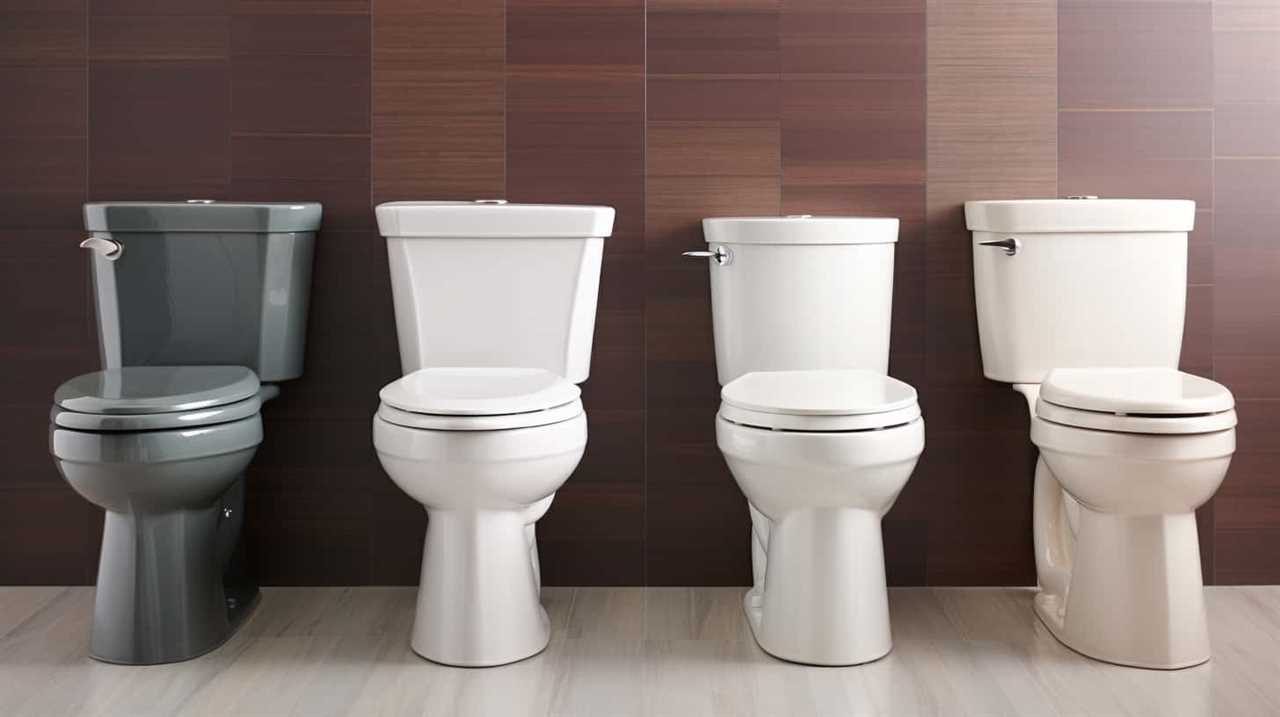
Next, flush the toilet to drain the tank and remove any remaining water.
Disconnect the water supply line from the bottom of the tank and use a wrench to loosen the nut securing the fill valve to the tank.
Once the nut is loose, you can remove the old fill valve.
Install the new fill valve by following the manufacturer’s instructions, ensuring it’s properly aligned and secured.

Reconnect the water supply line and turn on the water.
Finally, test the toilet by flushing it to check if the fill valve replacement has resolved the flushing issues.
If the problem persists, you may need to consider upgrading to a dual flush system, which we’ll discuss in the next section.
Consider Upgrading to a Dual Flush System
Now, let’s explore the option of upgrading to a dual flush system to address any persistent flushing issues. When it comes to upgrade options, a dual flush system is an excellent choice for its numerous benefits. Consider the following advantages:

- Water Efficiency:
- Dual flush systems offer two flush options: a smaller flush for liquid waste and a larger flush for solid waste. This allows users to conserve water by using the appropriate flush for each situation.
- By upgrading to a dual flush system, you can significantly reduce your water consumption, leading to lower utility bills and a more environmentally-friendly home.
- Improved Hygiene:
- The dual flush system’s larger flush option provides a more powerful flush, ensuring effective waste removal and preventing clogs.
- With its efficient flushing mechanism, a dual flush system reduces the need for multiple flushes, promoting better hygiene and cleanliness.
Seek Professional Help if All Else Fails
If all else fails, it’s advisable to seek professional help for a broken toilet flush. While DIY troubleshooting tips can often resolve common issues, some problems may require the expertise of a professional plumber.
Seeking professional assistance ensures that the underlying cause of the problem is correctly diagnosed and effectively addressed. Plumbers have the necessary tools and knowledge to handle complex repairs and replacements, minimizing the risk of further damage or complications. Additionally, they can offer valuable advice on maintenance and recommend suitable upgrades if necessary.
When contacting a professional, be prepared to provide them with details about the issue, such as the symptoms observed and any attempted fixes. This information will assist them in troubleshooting the problem more efficiently, ultimately saving time and money.
Conclusion
In conclusion, if your toilet flush is broken, there are several steps you can take to resolve the issue.

- Check for water supply issues
- Inspect the flush handle and chain
- Adjust the water level in the tank
- Clean the toilet bowl and flapper
- Replace any faulty components
Consider upgrading to a dual flush system for added efficiency.
If all else fails, seek professional help. Remember, fixing a broken toilet flush isn’t rocket science, but it does require some troubleshooting skills.



